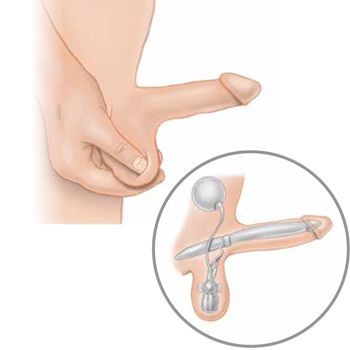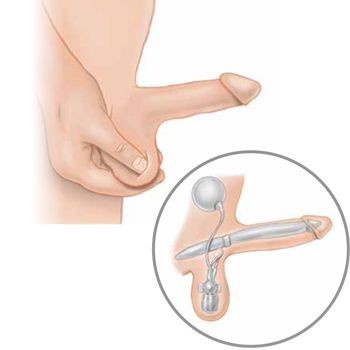Treatment Options
Oral Medications
Vacuum Erection Devices
Penile Implants
In use since the 1970s, the AMS 700™ MS Series Inflatable Penile implant has helped hundreds of thousands of men return to an active sex life.6 A penile implant is a medical device that is implanted in the penis during an outpatient procedure. The implant is entirely concealed within the body. To operate, one squeezes and releases, the pump, located in the scrotum, to achieve an erection. To return the penis to a natural flaccid state, the deflate button located on the pump bulb is depressed.
Studies report high patient and partner satisfaction rates. In one study of 200 men, 92% reported sexual activity to be “excellent” or “satisfactory” and 98% reported erections to be “excellent” or “satisfactory”.7 In another study 97% of patients would recommend an AMS 700 implant to a friend.8
In a study of 120 partners, 96% reported their partner’s erections to be “excellent” or “satisfactory”.7
Injections
Intraurethral Suppositories

Find an ED Specialist
Boston Scientific Men's Health treatment options could help a patient restore their self-confidence and change their life.









